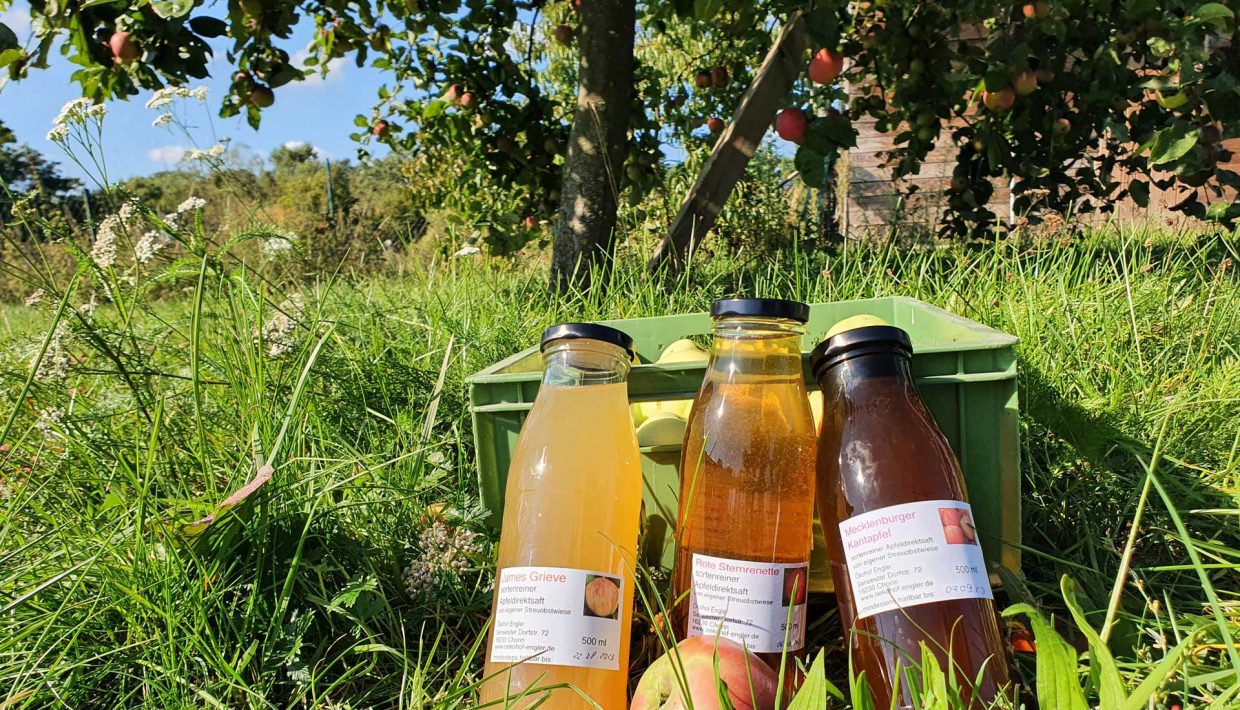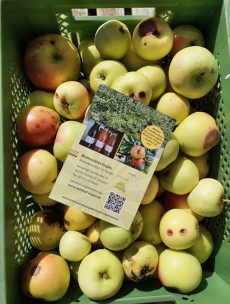When Kornelia Engler walks through her meadow orchards, she dreams of establishing her own cider factory. She and her husband Lutz want to press single-variety apple juices from historical varieties like Berliner Schafsnase, Roter Winterstettiner and Danziger Kantapfel. Until now, processing has been done by a friend, who retired in 2022. Now they need to build their own processing facility, with a ratchet mill, press and bottling plant.
With the total investment required at around €13,000 (£11,188), the couple from Serwest Village, in the Schorfheide-Chorin Biosphere Reserve (Brandenburg) could have raised most of this themselves. “But the general political situation and the energy crisis made us nervous,” says Mrs Engler. The couple were inspired after a health food store in Angermünde suggested crowdfunding as a financing option. And considering the added benefit of the funding method boosting their profile, they decided to have a go themselves.
What is crowdfunding?
Crowdfunding helps finance projects with participation of the public. The initiator, rather than turning to banks or other financial institutions, instead directly addresses the public to find as many supporters as possible for their project. Depending on the crowdfunding model, supporters may receive something in return for their contribution. There are four crowdfunding models – each suited to specific project types:
- With donation crowdfunding, supporters do not expect anything in return. This is suitable for charity projects, like animal sanctuaries.
- Advance sale crowdfunding is suitable for smaller projects and acquisitions, like orchards, agroforestry, flowering meadows or advance product sales. This option is particularly interesting for agriculture. Here, supporters receive something in return, for example a product or a special service.
- In the case of yield crowdfunding or crowd investing, supporters receive financial compensation. This can be, for example, a performance-related return. This model is suitable for larger investment projects, like a farm shop.
- Crowd lending, on the other hand, works almost like classic credit. Here, supporters provide a loan at a fixed interest rate. This form of funding is also suitable for larger investment projects, like installing a solar farm.
Regional projects related to sustainability are exciting for the community and therefore promising for their initiator. In the case of the Engler family’s organic farm, the goal is to preserve older and regional apple varieties, whose tall trunks provide a habitat for many animals. Most of the juice produced is sold directly from the farm, promoting added value in the region. In the future, private tree owners will be able to have juice pressed from their own trees at the Englers’ cider mill.
Starting a crowdfunding campaign

A project is prepared and launched on a platform with a detailed description. Next is the financing phase, where backers are recruited. If the campaign is successful, the project begins, and the agreed financial backing is provided. The Englers opted for advance sale crowdfunding on the EcoCrowd platform, which exclusively finances projects in the green sector.
Advance sale crowdfunding usually works by setting target stages. For the Englers these included:
- Covering the transportation costs for the cider plant system from the Voran Company in Austria (€230)
- Purchase of a ratchet mill (€2,540)
- Purchase of a packing press (€5,130)
- Purchase of a bottling plant (€5,100)
Advance sale crowdfunding promises donors’ compensation, which can come in the form of, for example, sponsorship, farm tours, or purchase discounts in the farm shop. Certified crowdfunding website wirgarten.com recommends five to 10 services in return, each staggered in price. In the Englers’ case, the donors were particularly enthusiastic about the discounts offered on cidermaking, which the couple included in the campaign at the request of regional fruit tree owners. In addition, the organic farm offered supporters the following:
- For a donation of €10 or more: A cup of coffee in its on-site courtyard café
- For €35: Three bottles of organic apple juice or three jars of organic jam
- For €50 or more: One night at the camping site or 20 litres of apple cider at half price
- For €100 or more: A whole weekend at the campsite or 50 litres of apple cider at half price

Who can benefit from a crowdfunding campaign?
Mona Knorr is a certified crowd funding specialist at wirgarten.com, and in her experience, most crowdfunding campaigns in the agricultural sector come from farms that already do a lot of external communication or cooperate closely with consumers. Ms Knorr, who has been advising project starters on campaign planning for over six years, explains that anyone who already has direct marketing, or an online presence can achieve the necessary reach much faster. Yet companies marketing to wholesalers will find crowdfunding more difficult, “they don’t have a courtyard environment that they can utilise for the campaign,” says Ms Knorr.
Dennis Westermann agrees. The qualified financial economist and tax consultant advises farmers on behalf of the Paulussen and Partners Tax Advisory Company in Diepholz. According to Mr Westermann, crowdfunding is most interesting for direct marketers. “Traditional agricultural businesses try to manage projects themselves with the help of the Landwirtschaftliche Rentenbank (Agro Bank), other financing institutions, or indeed with friends in the industry or a business partner,” says Mr Westermann.
Yet classic advance sale crowdfunding is rarely just about financing, but rather a combination of several goals like marketing, building a community around the farm, or marketing directly. “Receiving specific feedback on your own project is a great advantage,” says Mrs Engler. However, Ms Knorr adds: “If it’s just about financing an investment, crowdfunding is a complex option.”
3 tips for successful crowdfunding from Mona Knorr:

- Talk with others who have already completed successful campaigns to learn from their experiences.
- Prepare the campaign properly and sufficiently in advance (e.g. with a crowdfunding canvas).
- Be clear as to who you want to reach, and with which message. Your supporters must be enthusiastic about your project!
Proper planning is key to crowdfunding
A crowdfunding canvas can help with planning a campaign. A good budget is important – both for the project and for the campaign. The project needs a good story, one with a well-thought-out concept, that will win over backers. As the community is funding the project directly, clear information is needed. “If you just say you need money, nobody will donate,” says Mr Engler.
A good communication campaign will keep the community informed throughout. “My impression is that on many farms, there is simply no ‘free’ time,” explains Ms Knorr. It is therefore best to clearly understand, before the start of the campaign, who will be responsible for this communication.
The Englers are still a little unsure whether their crowdfunding will be a complete success. “Nevertheless, it’s a modern way of sourcing funding for a specific purpose. And the sustainability market is growing,” says Mr Engler. For him and his wife, it will be a valuable experience – to see what can be achieved with crowdfunding. “Small projects can be implemented relatively easily,” says Mrs Engler. “It will be interesting to see if our crowdfunding works, and we’re able to fund a project that we couldn’t finance in its entirety alone.


